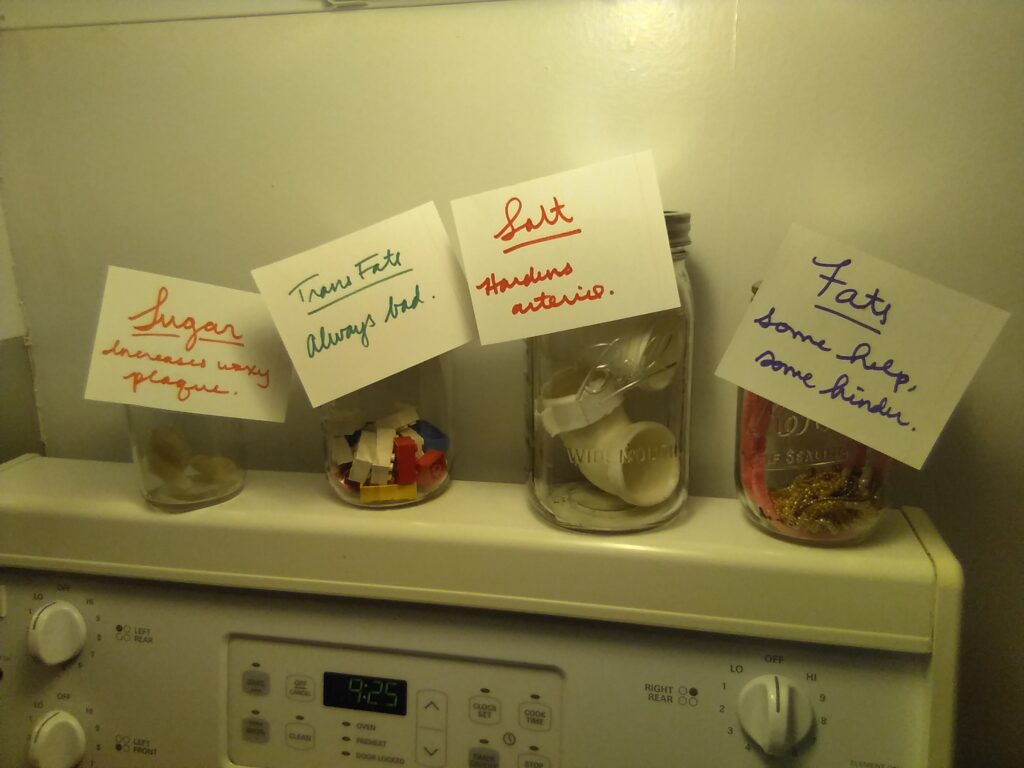
After researching the relationships between sugar, salt, cholesterol and cardiovascular health, I decided to represent my findings using assembled art. I used jars, labels (but not exactly on the jars so the contents could still be seen), and contents to represent the respective effects on our blood and cardiovascular system of a few dietary foods. I intended to represent the possible outcomes of consuming these foods in excess. For sugar, there is wax as sugar increases the incidence of waxy plaque build up in our arteries. For salt, there are rigid pipes as salt hardens our arteries making it more difficult for our heart rate to vary and meet our needs. For trans fats, legos, because trans fats are just about as good for us as legos would be in our blood vessels. For fats in general, there are pipe cleaners and beads to represent the varied effects that fats can have. Some fats are really beneficial, and might even act like pipe cleaners, increasing the health of our blood and blood vessels, while some fats are detrimental and can cause harm like tiny beads might in our blood.

The project uses everyday items to represent the various effects of materials we consume on our heart, veins, and arteries. Such as how there is PVC pipe to represent hardened or stiffened arteries due to excess salt, and non-descript wax to represent the build-up within the blood vessels due to sugar. Then for trans-fats they have lego bricks stacked together which is meant to represent how hard it is to move these materials through and how useless they would be in the body, then fats various effects on the blood vessels, from cleaning out the vessels to making precipitants in the blood.
I like the way the PVC pipe represents the hardened blood vessels and I think that presents itself very well and gets the point across, however the lego brick answer leaves me wanting more information. In what ways are trans-fats equivalent to legos in uselessness in the blood vessels?